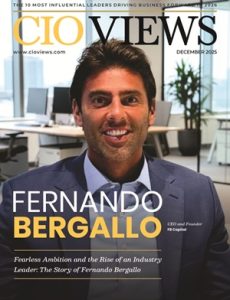The American housing market is a study in cycles. From double-digit interest rates in the late 1970s to the housing collapse of 2008 and the pandemic-fueled surge of recent years, builders have had to navigate an industry that never stays still for long. Those who endure learn that survival isn’t only about tools and timber. It’s about adaptability, integrity, and a willingness to evolve with the times.
Few careers illustrate this better than that of Kent Pecoy. Over 45 years in construction, he has weathered economic crashes, shifting building codes, and changing expectations of what a home should be. His career, which began in Massachusetts and now continues in Southwest Florida, offers a blueprint for what it takes to last in one of America’s most unforgiving industries.
Riding Out the Highs and Lows
Construction, more than most sectors, mirrors the economy. When mortgage rates spike, projects stall. When confidence returns, demand surges. The late 1970s offered a stark lesson. With borrowing costs at 18 percent, new home construction nearly came to a halt. Four decades later, the crash of 2008 would test builders again, wiping out firms that had expanded too quickly or relied too heavily on speculative markets.
Pecoy describes the key to endurance in simple terms: keep overhead lean, protect your reputation, and maintain client trust. He still recalls his grandmother’s advice, which became a career-long mantra: “If you’re good at what you do, you’ll always have work.” That principle carried him through downturns and remains his measure of success.
Craftsmanship and the Pressures of Modern Demand
The craft of building has changed dramatically since Pecoy’s early years of hand-cut beams and face-to-face client meetings. Today’s jobsite is just as likely to feature digital renderings, smart home systems, and advanced materials designed to save time and reduce energy costs.
Rather than resisting change, Pecoy believes in treating new technologies as tools rather than replacements. “Craftsmanship isn’t about resisting change,” he says. “It’s about making sure quality survives innovation.”
In Florida, where high-end homes must withstand hurricanes while meeting rising expectations for efficiency and comfort, that philosophy is essential. It acknowledges that while methods evolve, the fundamentals of precision, safety, and honesty remain constant.
Codes, Climate, and Responsibility
If market cycles are the financial test of a builder’s resilience, codes and regulations are the technical one. Few places illustrate this better than Florida, where each major hurricane has rewritten the standards for construction. In Massachusetts and other parts of the Northeast, energy efficiency mandates have had a similar impact, forcing contractors to rethink traditional approaches.
To Pecoy, these shifts are less of a burden than a safeguard. “Codes aren’t just red tape,” he says. “They’re the roadmap to safer, more resilient homes. The cost of cutting corners isn’t just financial. It can be catastrophic.”
This perspective underscores a broader point: regulation, though often unpopular, has been central to raising the quality and durability of American housing. For veterans like Pecoy, compliance isn’t just about avoiding penalties. It’s about professional duty and client trust.
A Workforce at a Crossroads
Perhaps the greatest challenge facing the industry today isn’t economic or regulatory but generational. The construction trades are experiencing a shortage of skilled workers as fewer young people choose to enter the field.
For Pecoy, mentorship has become a responsibility as much as a choice. Teaching technical skills is only part of the equation. Just as important is passing on the values that sustain a career: honesty, patience, adaptability.
“Leadership is about leaving the industry stronger than you found it,” he says. “The next generation isn’t just inheriting our tools. They’re inheriting our example.”
What Endurance Really Means
Nearly five decades of lessons point to a recurring theme: construction is less about buildings than about people. Families want homes that feel safe and lasting. Communities want infrastructure that can withstand storms and time. Workers want to build careers with dignity.
For Pecoy, the role of the builder is not simply technical. It is relational and ethical. Builders are trusted with the most important investment most families will ever make, and that responsibility requires both competence and character.
Markets will continue to rise and fall. New materials will replace old ones. Codes will tighten and technologies will advance. But the foundations of endurance—craftsmanship, adaptability, and integrity—remain as vital today as they were 45 years ago.
The Long View
Looking back on his career, Pecoy describes his journey as “The Long Way Around.” It is not a story of shortcuts or quick wins but of steady progress, tested in both prosperity and crisis.
Cycles will come and go. Trends will shift. Yet the blueprint for longevity remains: embrace change without losing sight of the core values that define the craft.
“Houses come and go, markets rise and fall,” Pecoy reflects. “But integrity, craftsmanship, and family—those are the foundations you never compromise.”





